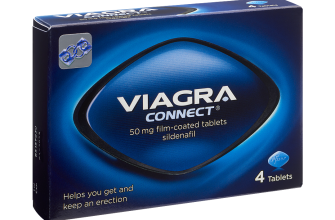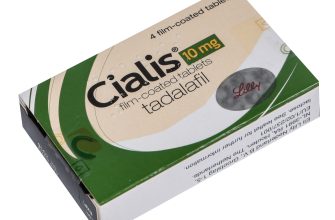Need to understand Propranolol quickly? Focus on its beta-blocker properties: it slows your heart rate and reduces blood pressure. This makes it highly effective for treating conditions like hypertension and angina.
Beyond these primary uses, Propranolol finds application in managing migraine headaches and anxiety disorders. Its ability to calm the nervous system contributes to its effectiveness in these areas. Remember, however, that proper diagnosis and medical supervision are paramount before initiating Propranolol therapy.
Dosage varies greatly depending on the specific condition and individual patient response. Your doctor will determine the appropriate dose and adjust it as needed. Common side effects include fatigue, dizziness, and nausea; however, these usually subside as your body adapts. Always report any concerning side effects to your physician immediately. Serious side effects are rare but require prompt medical attention.
Before starting Propranolol, discuss potential drug interactions with your doctor. This is especially important if you are taking other medications, including over-the-counter drugs. Open communication with your healthcare provider is key to safe and effective treatment.
- Propranolol: Understanding its Mechanism of Action
- Beta-Receptor Subtypes and Propranolol’s Action
- Specific Effects and Clinical Implications
- Pharmacokinetic Considerations
- Common Uses and Prescribed Conditions
- Other Applications
- Potential Side Effects and Precautions
- Common Side Effects
- Less Common but Serious Side Effects
- Precautions During Treatment
- Interactions with Other Medications and Substances
- Interactions with specific medications
- Interactions with substances
- Dosage and Administration Guidelines
- Adjustments and Titration
- Administration
Propranolol: Understanding its Mechanism of Action
Propranolol works primarily by blocking beta-adrenergic receptors in the heart and other tissues. These receptors are responsible for the effects of the hormone adrenaline (epinephrine) and noradrenaline (norepinephrine).
Beta-Receptor Subtypes and Propranolol’s Action
There are two main subtypes of beta-adrenergic receptors: beta-1 and beta-2. Propranolol acts as a non-selective beta-blocker, meaning it blocks both beta-1 and beta-2 receptors. Beta-1 receptors are predominantly found in the heart, while beta-2 receptors are more abundant in the lungs and blood vessels.
Blocking beta-1 receptors reduces heart rate, slows conduction through the atrioventricular node, and decreases the force of heart contractions. This lowers blood pressure and reduces the workload on the heart. Blocking beta-2 receptors can lead to bronchoconstriction (narrowing of the airways) and reduced blood flow to skeletal muscles. However, this effect is often outweighed by the beneficial cardiovascular effects, especially at therapeutic doses. The precise balance of these effects varies depending on the individual and dose.
Specific Effects and Clinical Implications
| Beta-Receptor Subtype | Effect of Propranolol Blockade | Clinical Relevance |
|---|---|---|
| Beta-1 | Decreased heart rate, reduced contractility, decreased AV nodal conduction | Treatment of hypertension, angina, arrhythmias |
| Beta-2 | Bronchoconstriction, decreased vasodilation in skeletal muscles | Potential side effects, particularly in patients with asthma or COPD |
Understanding this mechanism is key to appreciating both the therapeutic benefits and potential side effects of propranolol. Careful consideration of a patient’s individual needs and medical history is always necessary before prescribing this medication. Dosage adjustments may be needed depending on the patient’s response and overall health status.
Pharmacokinetic Considerations
Propranolol’s effects are also influenced by its pharmacokinetic profile; how the body processes the drug. Absorption, metabolism, and elimination all contribute to the drug’s overall effect. For example, liver function can significantly influence metabolism and thus the efficacy and duration of action.
Common Uses and Prescribed Conditions
Propranolol primarily treats high blood pressure (hypertension) and angina (chest pain). It effectively reduces heart rate and blood pressure, easing the strain on the heart. Doctors frequently prescribe it for these conditions.
Other Applications
Beyond hypertension and angina, propranolol finds use in managing several other conditions. These include migraines, where it helps prevent attacks by affecting blood vessel constriction. It’s also helpful in controlling tremor associated with conditions like essential tremor and anxiety disorders. Furthermore, it can alleviate performance anxiety, helping individuals manage symptoms before stressful events. Finally, doctors sometimes use it to treat hyperthyroidism symptoms such as a rapid heart rate.
Remember, a physician should always determine the appropriate dosage and suitability of propranolol for individual patients. This information is for educational purposes and doesn’t substitute professional medical advice. Always consult your doctor before starting or stopping any medication.
Potential Side Effects and Precautions
Propranolol, while generally safe and effective, can cause side effects. These vary from person to person and in severity.
Common Side Effects
- Slowed heart rate (bradycardia): Monitor your pulse regularly, especially when starting treatment. Report slow heart rates to your doctor immediately.
- Low blood pressure (hypotension): Be mindful of potential dizziness, especially when standing up quickly. Stay hydrated.
- Fatigue and weakness: This is often temporary. Getting adequate rest can help.
- Cold hands and feet: Wear warm clothing, especially in cold weather.
- Nausea and vomiting: Smaller, more frequent meals may help alleviate this.
- Sleep disturbances: This can range from insomnia to excessive sleepiness. Discuss sleep patterns with your doctor.
- Diarrhea or constipation: Dietary adjustments might be necessary. Consult your doctor or a registered dietitian.
Less Common but Serious Side Effects
Seek immediate medical attention if you experience:
- Severe allergic reaction (rash, swelling, difficulty breathing).
- Chest pain.
- Severe dizziness or fainting.
- Hallucinations or mental confusion.
- Yellowing of the skin or eyes (jaundice).
- Unusual bleeding or bruising.
Before starting Propranolol, inform your doctor about your medical history, including any pre-existing heart conditions, lung problems, liver or kidney disease, diabetes, or thyroid problems. Also disclose all medications you currently take, including over-the-counter drugs and herbal supplements. Discuss potential interactions with your doctor before combining Propranolol with other drugs. Avoid alcohol consumption during treatment, as it may worsen side effects. Regular check-ups with your doctor are crucial to monitor your progress and manage potential side effects.
Precautions During Treatment
- Gradual dosage adjustments are typical to minimize side effects. Strictly adhere to your prescribed dosage and schedule.
- Avoid abrupt cessation of Propranolol; consult your doctor for safe discontinuation guidance to prevent withdrawal symptoms.
- Be aware that Propranolol can mask the symptoms of hypoglycemia (low blood sugar) in people with diabetes. Regular blood sugar monitoring may be necessary.
This information is not a substitute for professional medical advice. Always consult your doctor or pharmacist for personalized guidance on Propranolol use and management of potential side effects.
Interactions with Other Medications and Substances
Propranolol can interact significantly with various medications and substances. Always inform your doctor and pharmacist of all medications, supplements, and herbal remedies you are taking, including over-the-counter drugs. This helps prevent potentially harmful drug interactions.
Interactions with specific medications
Combining propranolol with calcium channel blockers (like verapamil or diltiazem) can lower heart rate excessively. Similarly, concurrent use with other beta-blockers or certain antidepressants (like MAO inhibitors) may enhance their effects, leading to potentially dangerous drops in blood pressure or heart rate. Using propranolol with insulin or oral hypoglycemic agents can mask the symptoms of low blood sugar (hypoglycemia), requiring careful monitoring of blood glucose levels. Combining it with medications metabolized by the liver, like certain antihistamines or pain relievers, can alter their metabolism and either enhance or diminish their effects.
Interactions with substances
Alcohol consumption while taking propranolol can increase the risk of low blood pressure and dizziness. Certain herbal remedies, specifically St. John’s Wort, may decrease propranolol’s effectiveness. Caffeine can counteract some of propranolol’s effects, such as lowering blood pressure and heart rate. Smoking can also interfere with the medication’s effectiveness. Therefore, honesty with your healthcare provider about your lifestyle choices is vital for safe and effective treatment.
Dosage and Administration Guidelines
Propranolol dosage depends heavily on the specific condition being treated and the individual patient’s response. Always follow your doctor’s instructions precisely. Typical starting dosages for hypertension may range from 40mg to 80mg daily, divided into two doses. For angina, initial doses might be lower, around 10mg to 20mg four times a day. Dosage adjustments are common and will be guided by your physician based on blood pressure, heart rate, and overall response.
Adjustments and Titration
Your doctor will carefully adjust your dose, gradually increasing it as needed. This process, called titration, minimizes side effects while achieving the desired therapeutic effect. Frequent monitoring of blood pressure and heart rate is common during titration. For migraine prophylaxis, a typical starting dosage is 80mg to 160mg daily, although this may be altered depending on your response. Remember, regular check-ups with your doctor are critical for successful management. Never alter your dosage without consulting your physician.
Administration
Propranolol is typically administered orally, usually with food to minimize stomach upset. Take the medication at approximately the same time each day to maintain consistent blood levels. Liquid formulations are available for patients who have difficulty swallowing tablets. Always follow the instructions printed on the prescription label.








